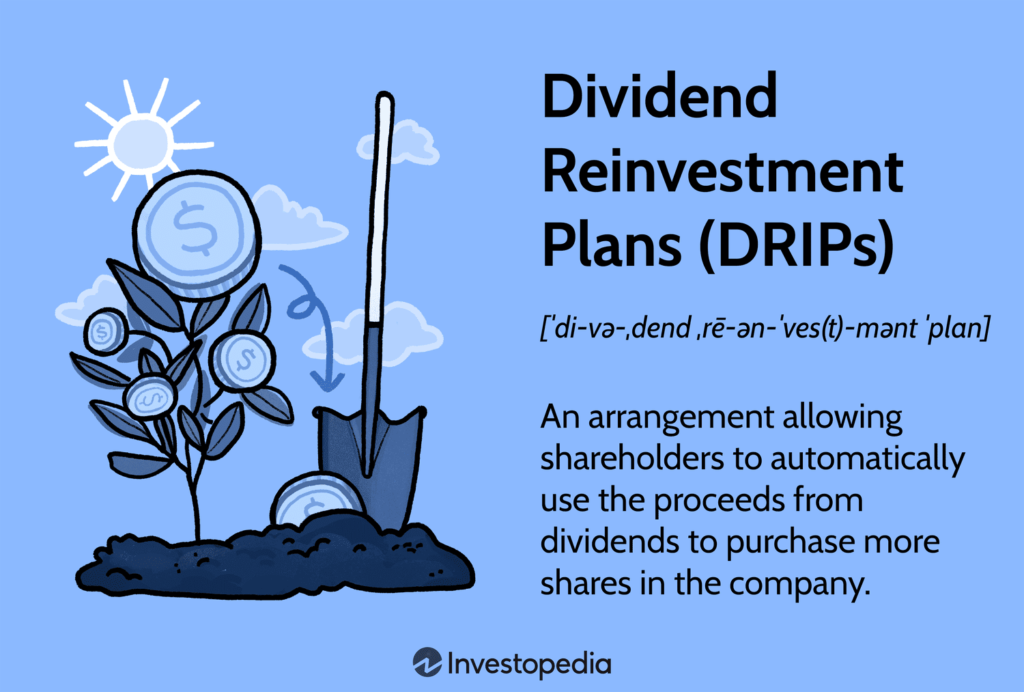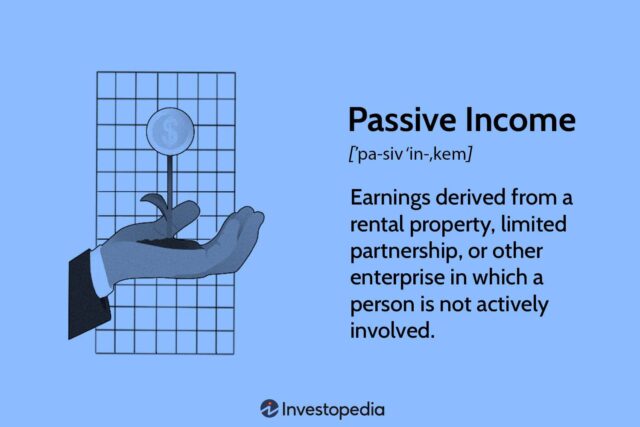Passive income has become an increasingly popular topic as people seek ways to earn money without actively working for it. In this guide, the concept of passive income will be explored, various methods to generate it will be discussed, and the benefits and potential drawbacks will be examined.
Understanding Passive Income
Passive income, as the term suggests, is income that is earned with minimal effort. Unlike active income, which requires continuous work, passive income allows individuals to earn money even when they are not actively working. This type of income can be generated through investments, rental properties, royalties, and other sources that require initial effort but then provide ongoing revenue.
Methods to Generate Passive Income
Several methods exist to generate passive income, each with its own advantages and requirements. The most common methods include:
- Real Estate Investments: Real estate properties, when purchased and rented out, can provide a steady stream of passive income. Residential properties, commercial spaces, and vacation rentals are often used for this purpose. The initial investment and management effort can be significant, but the rental income can be substantial.
- Dividend Stocks: Investments in dividend-paying stocks can yield passive income through regular dividend payments. By carefully selecting companies with a history of paying dividends, a reliable source of income can be established. This method requires a good understanding of the stock market and an initial financial investment.
- Peer-to-Peer Lending: Through peer-to-peer lending platforms, money can be lent to individuals or small businesses in exchange for interest payments. This form of investment can provide a higher return compared to traditional savings accounts or bonds. However, it involves a higher level of risk as well.
- Royalties from Intellectual Property: Income can be earned passively from intellectual property, such as books, music, or patents. Once the creative work is completed and published, royalties are earned whenever the work is sold or used. This method requires an initial creative effort and often involves marketing to generate sales.
- Online Businesses: Online businesses, such as e-commerce stores or digital products, can provide passive income. After the initial setup and marketing, sales can continue to generate revenue with minimal ongoing effort. Websites, blogs, and online courses are examples of such businesses.
- Automated Investment Platforms: Automated investment platforms, also known as robo-advisors, can manage investments on behalf of individuals. By setting up an account and defining investment goals, passive income can be generated through automated portfolio management.
- Rental Income from Equipment: Equipment, such as cameras, tools, or vehicles, can be rented out to others. This method involves purchasing the equipment and maintaining it in good condition, but the rental fees can provide a steady stream of income.
Benefits of Passive Income
The benefits of passive income are numerous and can significantly impact one’s financial well-being:
- Financial Freedom: Passive income provides a source of revenue that is not tied to active work, offering financial freedom. This allows individuals to pursue other interests, hobbies, or entrepreneurial ventures without worrying about a steady paycheck.
- Diversification of Income: Relying solely on active income can be risky. Passive income diversifies income sources, reducing financial risk and providing a safety net in case of job loss or economic downturns.
- Time Flexibility: With passive income, more time can be spent on activities that matter most, such as spending time with family, traveling, or pursuing personal passions. The need to work long hours is reduced, leading to a better work-life balance.
- Wealth Building: Over time, passive income can contribute significantly to wealth building. Reinvesting passive income can create a compounding effect, leading to substantial financial growth.
- Early Retirement: Achieving a steady stream of passive income can make early retirement a possibility. Without the need to work actively, retirement can be enjoyed earlier than traditional retirement age.
Potential Drawbacks of Passive Income
Despite its numerous benefits, passive income is not without its potential drawbacks:
- Initial Effort and Investment: Most passive income methods require an initial investment of time, money, or both. Real estate purchases, stock investments, or creating intellectual property can be time-consuming and costly.
- Ongoing Maintenance: Although the income is passive, ongoing maintenance and management are often required. Rental properties need to be managed, stocks need to be monitored, and online businesses need occasional updates.
- Risk Factors: Investments, whether in real estate, stocks, or peer-to-peer lending, come with risks. Market fluctuations, tenant issues, or defaulted loans can affect passive income streams.
- Regulatory and Market Changes: Changes in regulations or market conditions can impact passive income sources. For example, changes in tax laws can affect real estate income, while market downturns can affect stock dividends.
- Limited Immediate Returns: Passive income often takes time to develop. Initial efforts may not yield immediate returns, requiring patience and a long-term perspective.
Dividend Reinvestment Plans (DRIPs) in the Stock Market

Dividend Reinvestment Plans (DRIPs) have been increasingly popular among investors seeking long-term growth. These plans allow dividends paid by a company to be automatically reinvested in additional shares or fractional shares of the company’s stock, rather than being paid out in cash. Over time, the accumulation of additional shares through reinvestment can significantly enhance the value of an investment portfolio.
Historical Background and Evolution
DRIPs were first introduced in the 1960s as a way to encourage individual investors to reinvest their dividends. Initially, they were offered by a limited number of companies, but their popularity grew rapidly. By the 1980s, many large corporations had adopted DRIPs as part of their shareholder services. The concept has since evolved with advancements in technology, making it easier for investors to participate and manage their investments.
Mechanism and Operation
When dividends are declared by a company, shareholders participating in a DRIP are given the option to reinvest those dividends into additional shares of the company’s stock. This is typically done without any commission fees, which can be a significant advantage for investors. The reinvestment is usually facilitated through the company’s transfer agent or a brokerage firm.
Shares are often purchased at a discount to the market price, providing an additional incentive for participation. The reinvestment process involves the pooling of dividends from all participating shareholders, which are then used to purchase shares in bulk. This bulk purchasing helps to reduce transaction costs.
Benefits of DRIPs
Several benefits are offered by DRIPs, making them an attractive option for many investors:
- Cost Efficiency: DRIPs often involve lower transaction fees compared to regular stock purchases. Some plans even offer shares at a discount, enhancing the return on investment.
- Compounding Growth: By reinvesting dividends, investors can benefit from compounding growth. Over time, the additional shares purchased through reinvestment can significantly increase the overall value of the investment.
- Dollar-Cost Averaging: DRIPs facilitate dollar-cost averaging, as dividends are reinvested at regular intervals regardless of the stock’s price. This can reduce the impact of market volatility and help in accumulating shares at a lower average cost over time.
- Convenience: The automatic nature of DRIPs simplifies the investment process. Investors do not need to actively manage their dividend payments or make decisions about reinvestment.
- Long-Term Focus: DRIPs encourage a long-term investment perspective. By continuously reinvesting dividends, investors are more likely to hold onto their shares and benefit from the growth of the underlying company.
Types of DRIPs
DRIPs can be broadly categorized into two types: company-sponsored DRIPs and broker-sponsored DRIPs.
- Company-Sponsored DRIPs: These plans are directly offered by the issuing company. Shareholders can enroll in the DRIP through the company’s transfer agent. Company-sponsored DRIPs often provide additional benefits, such as discounts on share purchases and the option to buy additional shares directly from the company.
- Broker-Sponsored DRIPs: These plans are offered by brokerage firms. While they provide similar reinvestment options, the terms and conditions may vary depending on the broker. Broker-sponsored DRIPs can be more flexible, allowing investors to manage multiple DRIPs within a single account.
Considerations and Risks
While DRIPs offer numerous advantages, certain considerations and risks should be kept in mind:
- Concentration Risk: Reinvesting dividends in the same company can lead to a concentrated investment in a single stock. This may increase the risk if the company faces financial difficulties or its stock underperforms.
- Lack of Diversification: DRIPs inherently focus on reinvesting in the same stock. To maintain a diversified portfolio, investors may need to balance their DRIP investments with other assets.
- Tax Implications: Dividends reinvested through DRIPs are still subject to taxation. Even though the dividends are not received in cash, they are considered taxable income in the year they are reinvested.
- Administrative Fees: Some DRIPs may involve administrative fees for account maintenance or processing transactions. These fees should be carefully reviewed before enrolling in a plan.
- Market Timing: DRIPs do not account for market timing. Dividends are reinvested regardless of the stock’s current price, which may result in purchasing shares at higher prices during market peaks.
Real-World Examples
Several well-known companies offer DRIPs, including Coca-Cola, Johnson & Johnson, and Procter & Gamble. These companies have long histories of paying dividends and have used DRIPs to foster long-term relationships with their shareholders. By participating in these plans, investors have been able to accumulate significant holdings over time, benefiting from both dividend reinvestment and stock price appreciation.
Future Outlook
The future of DRIPs looks promising, with technology playing a crucial role in their evolution. Digital platforms and online brokerage services have made it easier for investors to enroll in and manage DRIPs. Additionally, increased financial literacy and a focus on long-term investment strategies are expected to drive continued interest in these plans.
Companies are likely to continue offering and enhancing DRIPs as part of their shareholder engagement strategies. By doing so, they can encourage investor loyalty and stability in their shareholder base. Innovations such as fractional share purchases and enhanced online tools will further streamline the DRIP experience for investors.
Conclusion
Dividend Reinvestment Plans (DRIPs) represent a powerful tool for investors seeking to grow their wealth over the long term. By automatically reinvesting dividends into additional shares, DRIPs offer a cost-effective and convenient way to benefit from the compounding effects of reinvested dividends. While certain risks and considerations must be taken into account, the overall benefits of DRIPs make them a valuable component of a well-rounded investment strategy. As technology and financial literacy continue to advance, the popularity and accessibility of DRIPs are expected to grow, providing investors with even more opportunities to harness the power of dividend reinvestment.
Conclusion
Passive income offers a viable way to achieve financial freedom and diversify income sources. Through methods such as real estate investments, dividend stocks, peer-to-peer lending, royalties, online businesses, automated investment platforms, and equipment rentals, a steady stream of income can be generated with minimal ongoing effort. While the initial investment and ongoing maintenance are necessary, the benefits of financial independence, time flexibility, and wealth building make passive income an attractive option for many.
In conclusion, passive income is not without its challenges, but with careful planning and strategic investments, the rewards can be significant. A diversified approach, combining multiple passive income streams, can provide a robust financial foundation and pave the way for a more secure and fulfilling financial future.










